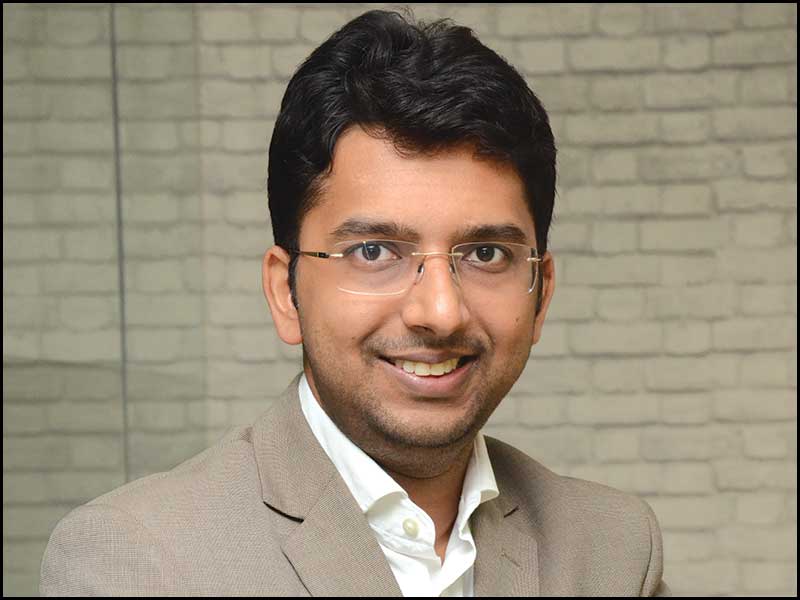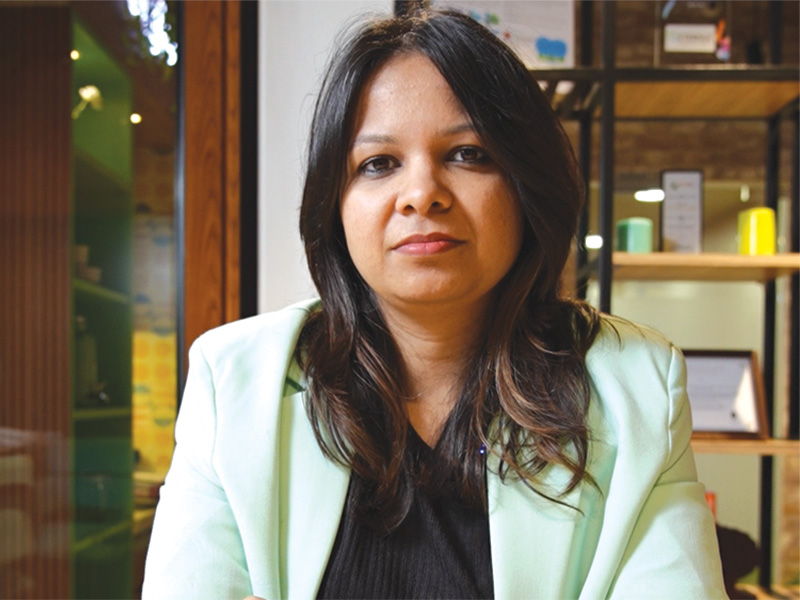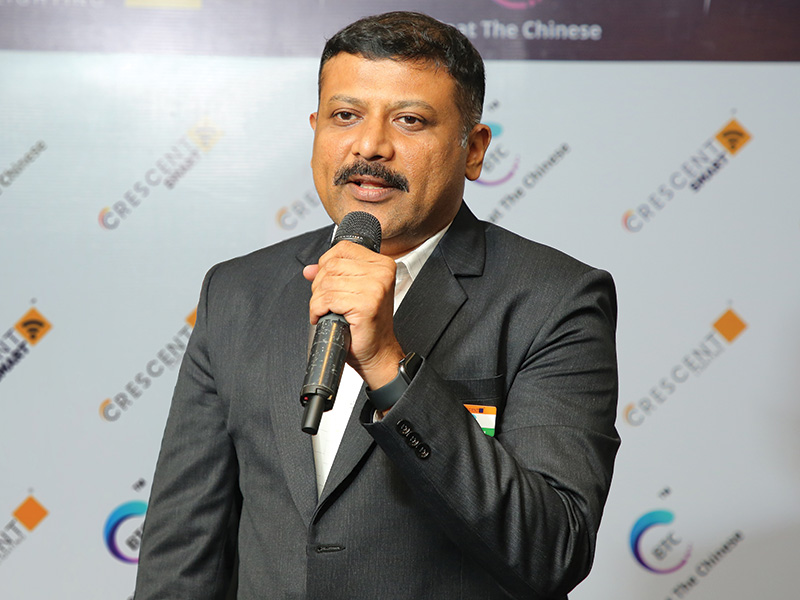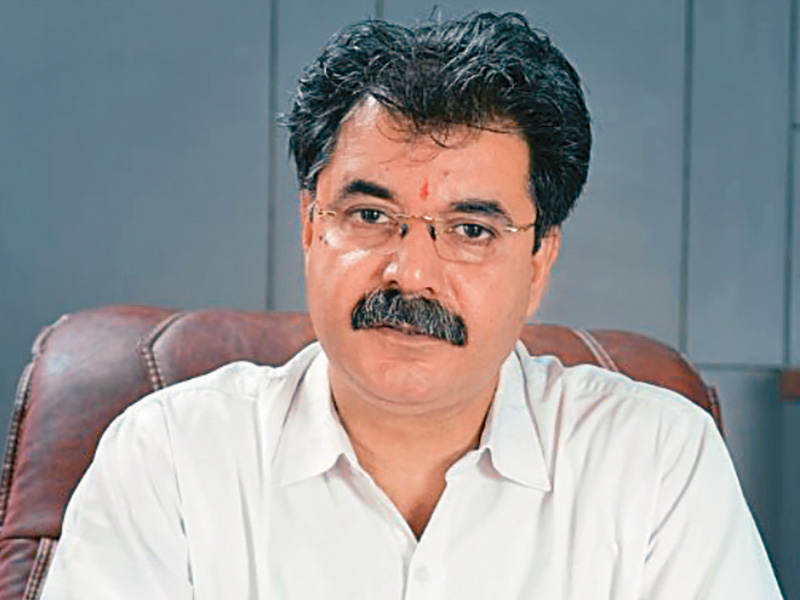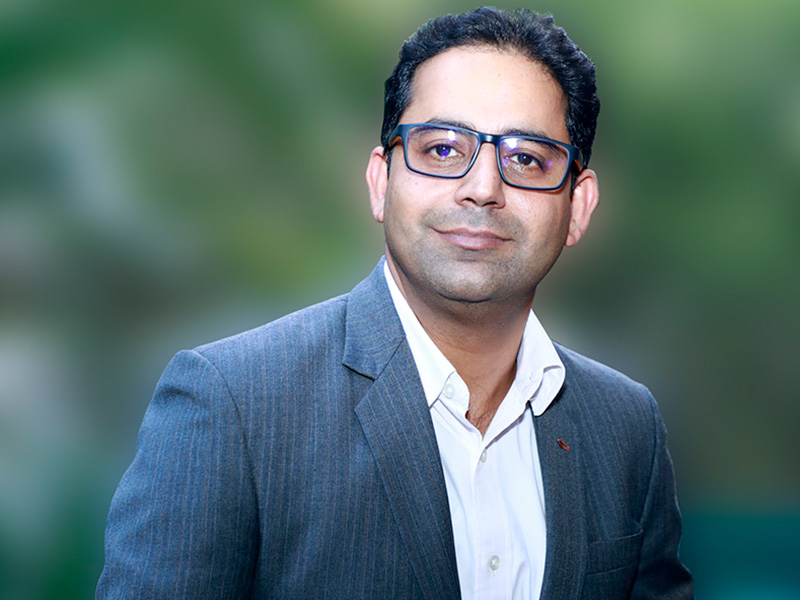
In the quest to know as how the company is strategising its future course of action to match the goal that it has set, MGS Architecture met K-Lite's young, energetic, and dynamic Director, Ms. Sharmila Kumbhat, the force behind the company's phenomenal success in recent years. Here are the excerpts of what she shared.
K-Lite has been in the Indian lighting industry from over four decades now. How do you see lighting in its current perspective?
Why should we have to have a mundane approach to lighting as it is such an evolving industry and promises to pay you back in such a short time! It accentuates everything we do be it style of living or the atmosphere. It creates an emotional bond and helps depict the feelings. We feel dull because everything around us is dark & dirty. Lighting actually helps create mood, provide security & safety, etc.
Moreover, light has a communicative and social value in its ability to optimise urban spaces, giving the possibility of reclaiming the culture of a place, encourage aggregation, stimulating business and tourism, making events and architecture spectacular, besides increasing the feeling of safety. At K-Lite, we will lead our journey to many places not yet even known. K-Lite will continue to explore the mysteries of light that allow lifestyles to become better and better…
What is your take on the centre's 'Make in India' campaign?
40 years back, we started our journey through the Indian lighting industry. Over the years, K-Lite has grown to become the specialist company for outdoor lighting solutions. This is where our strength lies and we hold our forte, which we want to further strengthen. From the time of our inception, we have been maintaining the 'Make in India' concept and sourcing maximum components from the quality Indian manufacturers to develop fully indigenous products. However, with the advent of LED, there are a few components like chips, optics, modules, etc. for which we don't really find any local supplier and rely heavily on companies outside India. Nevertheless, last few years have witnessed foreign electronic giants like b,a,g, Atco, etc., setting up their plants in India, thereby facilitating easy access to quality components. This is, in a way, boosting the Centre's 'Make in India' campaign further.
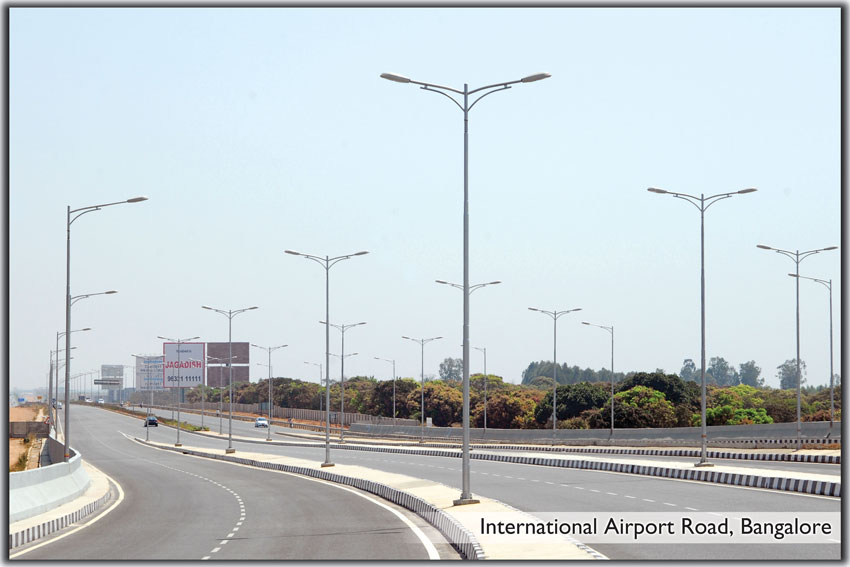
Switching over to LEDs has prompted many manufacturers across the lighting industry to modify their setup. What changes did K-Lite do to accommodate the transition?
LED-lighting is an integration of many components including chips, optics, drivers, cables, fixtures, etc, It is not possible for any single manufacturer to produce all of them, and therefore, we source from various quality component manufacturers and try to merge the best ones in terms of lighting technology. Unfortunately, for a country of our size and the advancements achieved in various fields, we do not have even a single manufacturer for LED chips so far. As far as revamping of infrastructure is concerned, we are now in the process of replacing the regular machines with the advanced and automated ones. For instance, we now have our in-house automated assembly lines. What I feel is that the transformation, from the electrical-based industry to one that is electronic-based, is going to be fun-filled and adventurous. The transition is challenging, but with challenge, we all grow for which we, at K-Lite, are excited about.
So far, how has been this shift from electrical to electronics for K-Lite?
The whole wave has been stabilised a little, though the wheels are always going to be on the learning curve as the lighting industry along with the market is evolving at a rapid pace owing to the day-by-day development in LEDs. Truly speaking, none can ever boast that yes, we have it all! We are constantly improving ourselves, learning something new, and trying to incorporate the same to develop innovative solutions. Meanwhile like every other manufacturers, we do have our own set of challenges as well as advantages, which we are trying to balance. Nevertheless, the shift has raised the bars at all the levels – be it efficiency, sustainability or aesthetics. For now, we try emulating the terms of the chip manufacturers for bringing efficiencies, while we use our own expertise to add sustainability and aesthetics in the final outcome.
When it comes to design, we observe that K-Lite's products have gone much sleeker. Where do you get the concepts from? And what efforts do you put to convert a concept into design?
Since, I myself being from the design background, aesthetics mean a lot to me. When you ask me the source of inspiration, it's tough to name, but it takes little time for us to convert any concept in to actual design owing to a well-equipped very strong and creative in-house design department. Our incubation period is much shorter when compared to the other manufacturers in the industry – right from concepts to actual drawings to implementations, to prototyping to testing to finishing and to getting the same in to the market; we have the shortest lead time. For that matter, our design team comprises as many as 30 young and energetic designers who are extremely capable to convert any concept in to design. Besides, they incessantly put their efforts to bring out something new out of their own imagination and creativity, all within the least possible timeframe. These apart, we have the lighting engineers and a well-equipped testing lab. We believe in selling concept products, instead of relying more on numbers for growth, and that is why, we have been dedicatedly catering to the high-end niche. We, actually, believe in long-term relationships with our business partners and associates to make it a win-win proposition for all of us.
How does K-Lite guarantees quality?
See, the chips that we use all come from branded companies. They are multi-billion dollar companies with their R&D and setups fantastically good ensuring the quality of the light source. For optics also, we are associated with renowned manufacturers, further setting the benchmark standard depending on the applications. And then we integrate the LEDs and optics so procured with our strength, which we have in the form of developing the housing to finally come up with a sustainable end-product based on the applications as the quality of LEDs and optics varies with applications. We, in fact, try to work there to bring forth a complete product or solution which is going to be versatile, and can be used in specific/multiple applications.
Which new segment(s) is K-Lite eying for its expansion in near future?
K-Lite is now going to step in to the retail segment but again with a very-very run-of-the-mill product portfolio to target general institutions, offices, and complexes. We are also planning to come up with some innovative interior lighting solutions as well. For this, we already have certain in-house strengths like gold-plating plant, metal ornamental works plant, etc which we would like to fuse in, to see what we can come up with creatively.
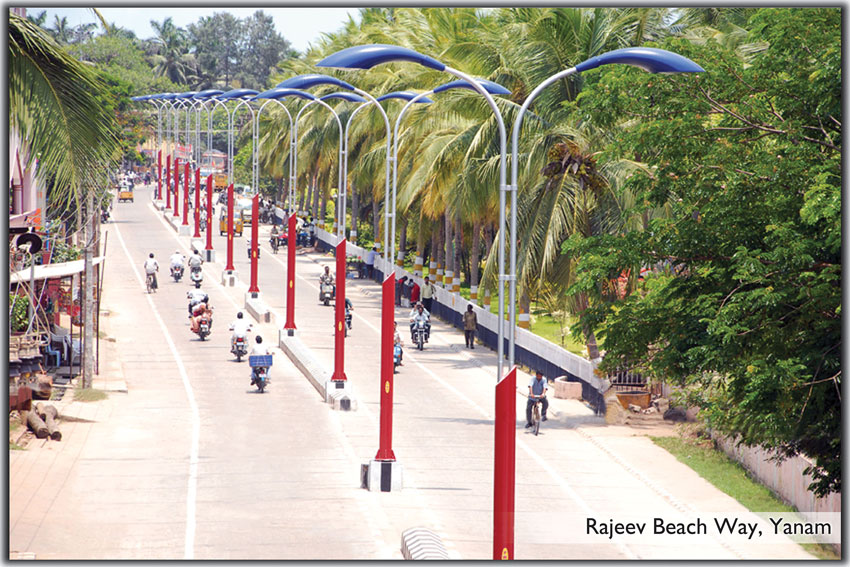
The government has set the tone by replacing all the existing streetlights and public space lighting to LEDs. How do you see this move in the wake of future prospect for K-Lite?
It's actually a big step forward with the underlying logic being that conserving power is more economical than producing. It's a great initiative undoubtedly and will surely help the country in facilitating huge saving provided it's followed and implemented with the same vigour and completed within the stipulated timeframe so as to validate the change before it becomes obsolete. Has that been addressed in a manner it is asked for, only time will say!
At K-Lite, we already have taken this move seriously and have shifted our focus to design and develop LED-based lighting system. Also the shift should be variable with scope of upgradation. Though we are making changes, we often need to speculate how effective it is, and how the maintenance factor is associated with it as LEDs are still a kind of evolving technology, setting new horizons each passing day. However, one thing is pretty clear that to deliver promise it has to have the quality and sustainability.
What are the business opportunities for the company in government ambitious Smart Cities plan?
It's very good for India, provided things are planned and executed systematically. For instance, even for a home, we put the integration of all the systems we want to see therein, and smart city is like imaging another world. Therefore, if the planning is failsafe and executed in the required manner, the outcome will be remarkably unimaginable. From my point of view, smart city project in India is a perfect platform to showcase what India can do! We are flooded with talents and skills as we have a big bunch of brilliant architects, landscape consultants, designers, etc. In short, India has everything to offer not just in lighting but across the spectrum, but missing the needed aptitude.
We, at K-Lite, are seriously looking forward to these opportunities and are in process of developing smart lighting system. For that matter, we are working towards providing failsafe smart solutions, minutely considering environmental and cultural issues at regional level. If things went in line with the plans, probably in the mid of this year or by the yearend, we will have a whole lot of products which are going to be smart for almost all the major application areas including street, residential, and commercial ones.






